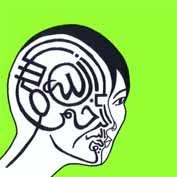
INTRODUCTION
Puri ibu is a house specifically designed for a mother. It is a small house and to consider a clearly identifiable building typology, is the most recent of its kind. In the history of architecture, a basic unit would usually set the precedent to a larger complex. Looking in retrospect at traditional architectural build form for the Malays, a rumah bujang or rumah ibu (small house) is usually the first basic unit to be built.
FORMS AND SPACES
Puri Ibu was designed to deal with climate and environment of the tropic. It can be seen in her open verandah that we called serambi luar, the fluid interaction between inside and outside, a body of water in the form of a fish pond positioned in between anjung tamu(living area) and ruang santapan(dining area), steeply pitched roofs with wide eaves and deep overhangs to keep out the rain and to provide shade, provisions for cross-ventilation through ‘breathing’ wall slats made out of timber. The use of timber, which has a low thermal mass, as building material and composed in a contemporary manner, is suitable for Puri Ibu.
Architectural forms for Puri Ibu are by no means immutable. They are congruent hybrid of indigenous and imported types; where the modern and the traditional are fused into a new model that generates transformations of spaces and forms. A simple palette of materials namely timber, concrete structure, brick plastered wall, glass and tiles come together to give the effect of a new kampong house. Puri Ibu consists of a double-storey structure that houses a mother’s bedroom on the ground floor and guest’s bedroom on the upper floor. This is connected to separate single-storey pavilions on the ground consisting of anjung tamu and rumah dapur. Spaces that are incorporated into the rumah dapur are ruang santapan, kitchen and bathroom.
Most of the spaces are designed to capture the winds and breezes of the surrounding area, bequeathing Puri Ibu with natural ventilated spaces. At night when the lights are switched on, the ‘breathing’ outer timber wall slats on the upper floor become enchanting glowing feature.
A combination of internally adjusted glass-louvred walls in the guest’s bedroom and the outer timber wall slats allow for the control of air movement into the room. Timber frames, parquet and ceramic tiles are arranged into a strong composition to create depth and contrast in Puri Ibu.
ROOFSCAPE
The roof is a very important visual and practical element in Puri Ibu. Pure roof form and shape was entirely used in Puri Ibu to reflect the image of tropical architecture. Pyramidal shape roof or ‘bumbung meru’ is used for anjung tamu and hip roof form or ‘bumbung limas’ is used for rumah dapur. A huge mono-pitch roof, derived from the traditional bumbung panjang, is composed for the upper floor of this double-storey structure.
A strong geometry, both in plans and three-dimensional form was a major design intention for Puri Ibu. The combination of modulated roofscape with the surrounding environment makes Puri Ibu visually attractive.
WATER AND LANDSCAPE
A central focal element at Puri Ibu is the fishpond complete with waterspout. The pool of water acts as an external bonding space for the anjung tamu and ruang makan. Water features symbolically represent contemplation for life and the unifying factor in the origins of all creations. In a humble manner, this element becomes the most attractive and compelling design feature of Puri Ibu.
Puri Ibu is placed in the middle of the lot and basically surrounded by the plants and orchard trees. The natural landscape of kampong evoked a strong spiritual feel of a garden with natural setting. This kind of surrounding not only offers delightful nuances through their colours, fragrances, forms and composition, but is also enchanting with contemplative qualities. Potted plants are used in Puri Ibu to define spaces and to demarcate territorial boundaries. Tiles of pebbles and river stones are used as external landscape finishes surrounding the building.
CONCLUSION
Tropical architecture allows for a symbiotic relationship between man-made elements and nature to exist. The smells of nature; of decaying leaves, the aroma of flowers, of earth as heat surrenders itself after the rain and the sound of water; of the rain fall and of the wind blowing through the foliage of leaves. All these are composed into Puri Ibu to signify a kampong retreat.


No comments:
Post a Comment